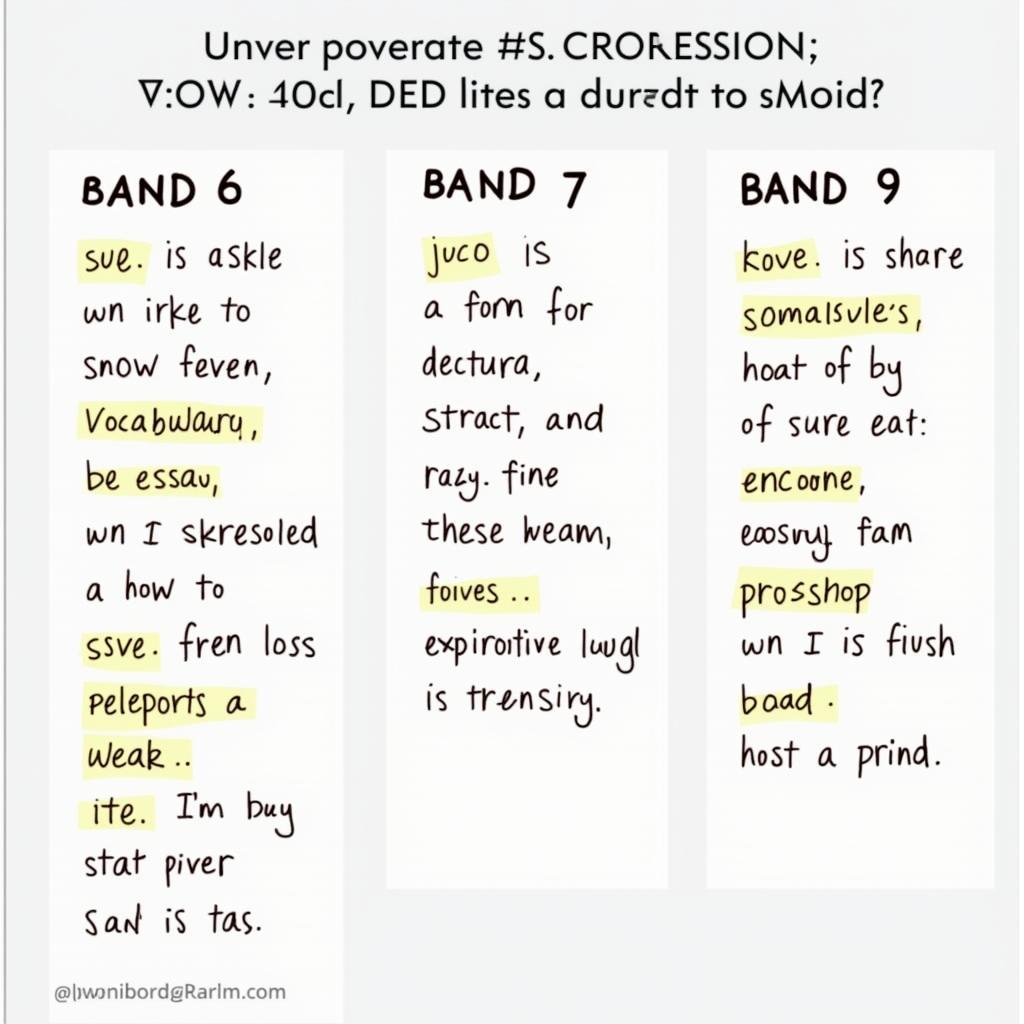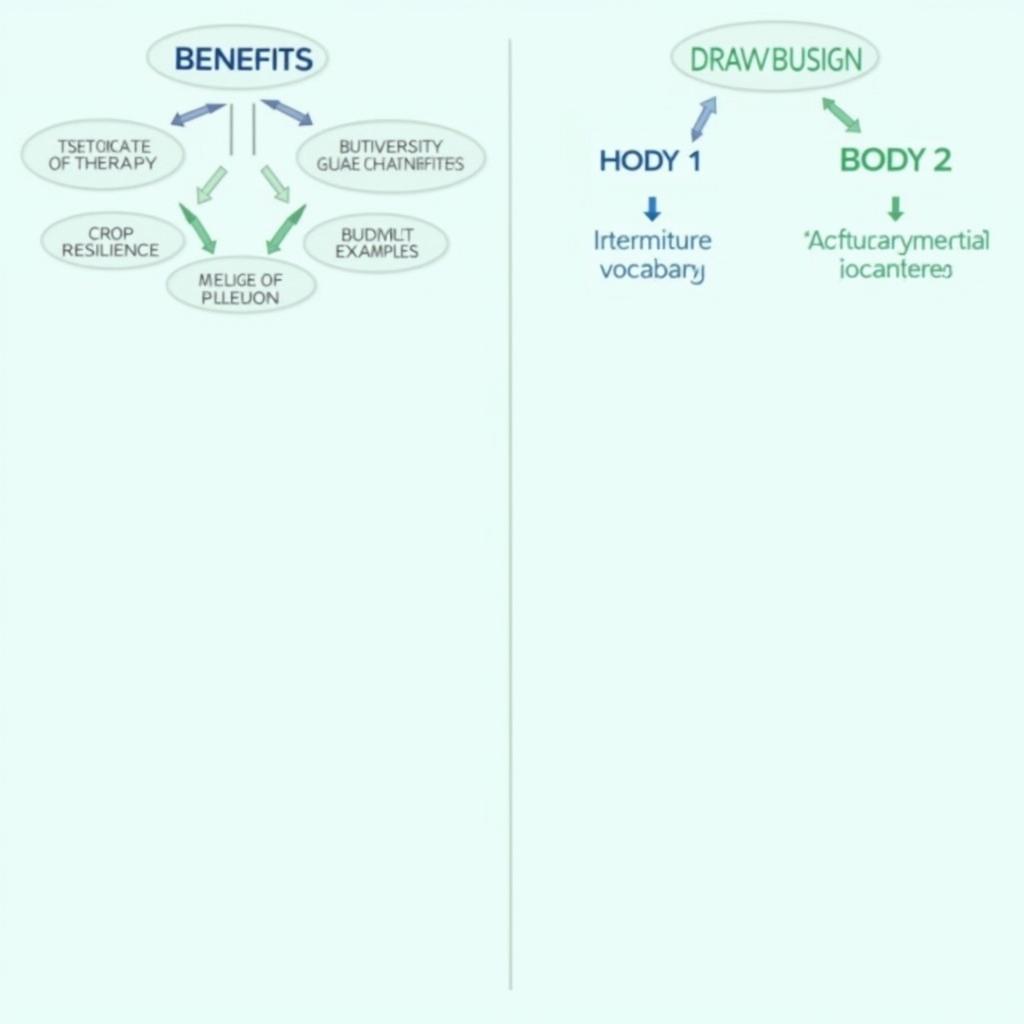Introduction
In recent IELTS Writing Task 2 exams, health-themed prompts—especially those dealing with the impact of stress—appear frequently. Examiners favor this topic because it tests your ability to analyze causes, propose solutions, and handle nuanced opinions about work-life balance and public health. In this lesson, you will learn how to approach common stress-and-health prompts, read three full sample essays (Band 8-9, Band 6.5-7, and Band 5-6), and understand exactly why each essay earns its score. You will also get examiner-style analysis, high-scoring sentence patterns, and targeted topic vocabulary.
Verified past questions on stress and health reported on trusted sources (IELTS-Blog, IELTS Liz, and official preparation hubs) include:
- Many working adults now suffer from stress-related health problems. What are the causes of this, and what can be done to address them? (reported by IELTS-Blog; similar framing listed on IELTS Liz)
- Stress is now a major problem in many countries and it affects people’s health. What are some of the factors in modern society that cause this stress, and how can it be reduced? (IELTS Liz; similar reports on IELTS-Blog)
- People are suffering from more stress than in the past. What are the causes and how can this problem be solved? (reported by IELTS-Blog; commonly appears in practice sets from major providers)
For more background reading, you can explore a focused overview of the topic here: The impact of stress on health.
1. Question & Analysis
Many working adults now suffer from stress-related health problems. What are the causes of this, and what can be done to address them?
- Question type: Problem–Solution
- Requirements:
- Identify main causes of stress-related health issues among working adults
- Propose realistic, well-prioritized solutions at individual, organizational, and possibly governmental levels
- Key terms:
- “stress-related health problems”: conditions like hypertension, insomnia, anxiety, burnout, and musculoskeletal pain
- “causes”: immediate and underlying (e.g., workload, job insecurity, commuting, digital overload)
- “what can be done”: practical measures; show agency (individuals, employers, governments)
- Common pitfalls:
- Listing too many causes without development or examples
- Giving vague, impractical solutions (e.g., “people should relax more”)
- Ignoring the working-adult focus
- Repeating the question’s language without paraphrasing
- Strategic approach:
- Plan a two-cause, two-solution structure for clear balance
- Use specific examples relevant to your context (e.g., long work hours in East Asia, shift work in hospitals, tech sector overtime)
- Prioritize solutions with measurable impact (e.g., limit emails after hours, subsidize counseling, redesign shifts)
 IELTS stress and health topic shown through workplace scene and essay planning
IELTS stress and health topic shown through workplace scene and essay planning
2. Band 8-9 Sample Essay on The impact of stress on health
Band 8-9 essays are characterized by a clear position throughout, fully developed ideas, precise vocabulary, flexible grammar, and logically sequenced paragraphs with sophisticated cohesion.
Essay (about 300 words):
Chronic workplace stress has emerged as a major threat to adults’ physical and mental health, largely due to excessive workloads and blurred boundaries between office and home. This essay argues that work design and cultural expectations are the primary drivers, and that targeted organisational reforms—supported by public policy—offer the most effective remedies.
One key cause is unmanageable workload combined with digital overload. In many sectors, employees are expected to respond to messages at all hours, which keeps cortisol levels elevated and disrupts sleep cycles. In Asian megacities, long commutes intensify fatigue, while presenteeism normalises staying late even when productivity has dropped. A second cause is job insecurity, particularly in fast-moving industries: frequent restructuring fosters anxiety, which manifests as hypertension, anxiety disorders, and burnout.
To address these issues, employers should redesign workloads and enforce a “right to disconnect.” For instance, capping after-hours emails and setting realistic sprint goals reduce physiological stress and restore rest. Parallel to this, companies can subsidise confidential counselling and train managers to identify early warning signs of burnout. At the policy level, governments can incentivise flexible scheduling—especially for shift workers—and mandate minimum rest periods between shifts to protect circadian health. Public campaigns that destigmatise mental-health support would further increase uptake of preventive care.
Admittedly, individuals also bear responsibility: sleep hygiene, regular exercise, and mindful technology use are protective. Yet such measures struggle without systemic change. It is the culture of constant availability, rather than personal weakness, that precipitates illness.
In conclusion, stress-related health problems are largely a product of structural pressures—excessive workload, digital intrusion, and insecurity. If organisations and governments prioritise humane work design, individual habits can work as intended, and working adults will regain their health.
Scoring breakdown:
| Criterion | Estimated Band | Rationale |
|—|—:|—|
| Task Response | 9.0 | Fully addresses causes and solutions with a clear, consistently developed position and relevant examples. |
| Coherence & Cohesion | 8.5 | Logical sequencing; controlled paragraphing; sophisticated referencing and signposting. |
| Lexical Resource | 8.5 | Precise, topic-specific lexis (cortisol, circadian, presenteeism, destigmatise) with natural collocations. |
| Grammatical Range & Accuracy | 9.0 | Wide range: inversion, clefting, complex subordination; error-free and natural. |
Why this essay excels:
- Clear, balanced cause–solution structure
- Specific, plausible examples tied to working adults in Asia
- Advanced yet natural vocabulary and collocations
- Varied grammar: inversion, cleft sentences, non-finite clauses
- Firm, nuanced stance acknowledging individual and systemic roles
- Strong cohesion without mechanical linking words
A related workforce angle is explored in The impact of shift work on health, which can deepen your ideas about circadian disruption and policy solutions.
3. Band 6.5-7 Sample Essay on The impact of stress on health
Band 6.5-7 essays present a clear position and relevant ideas, but may show uneven development, limited range of lexis/grammar, or occasional imprecision.
Essay (about 260 words):
Stress-related illnesses among working people are common today, mainly because of heavy workloads and a fast digital culture. In my view, employers and individuals should share responsibility for improving health.
One cause is that employees work longer hours and must answer messages after work. This habit interrupts sleep and creates constant pressure. For example, in large cities many commuters arrive home late, then still have to reply to urgent emails. Another reason is fear of losing a job. When companies change teams or targets too quickly, workers worry about performance, which may result in headaches or anxiety.
To solve this, companies could set clearer boundaries. If managers stop sending emails after a certain time and plan realistic deadlines, people can rest better. Employers should also provide counselling or stress-management workshops. Meanwhile, individuals can exercise regularly, avoid screens before bed, and ask for support when needed. Governments might also encourage flexible work hours, especially for parents or shift workers.
In conclusion, stress affects health because modern work often continues too late and because insecurity is common. With better policies at work and healthy routines at home, the problem can be reduced.
Scoring breakdown:
| Criterion | Estimated Band | Rationale |
|—|—:|—|
| Task Response | 7.0 | Addresses both parts with relevant examples; some ideas could be more deeply extended. |
| Coherence & Cohesion | 7.0 | Clear paragraphing and logical flow; cohesion mostly effective though conventional. |
| Lexical Resource | 6.5 | Adequate range; some repetition (“emails,” “work”); fewer precise collocations. |
| Grammatical Range & Accuracy | 6.5 | Mix of complex and simple sentences; minor errors and limited variety compared with Band 9. |
How it differs from Band 8-9:
- Specificity: Band 8-9 references “cortisol,” “circadian,” “right to disconnect”; here lexis is more general.
- Development: Band 8-9 gives multi-level solutions (manager training, legal rest periods); this essay suggests fewer policy mechanisms.
- Grammar: Band 8-9 uses inversion and clefting; here complex sentences are simpler.
- Cohesion: Band 8-9 integrates ideas fluidly; this essay uses more standard connectors.
For comparison with contemporary work patterns, see how home-based arrangements affect wellbeing in The effects of remote work on health.
4. Band 5-6 Sample Essay on The impact of stress on health
Band 5-6 essays present a relevant response but with limited development, noticeable errors, repetition, and uneven cohesion. Below, errors are highlighted.
Essay (about 260 words):
Nowadays many adults are getting sick because of stress, which is very serious problem. The first reason is people work too many hours and they cannot control their phone which makes them cannot sleep. If a manager messages late at night, the worker will feel they must answer immediately and it cause insomnia and headache. Another cause is that companies always changing targets, so staff are confuse and worry about performance. Stress also makes family relationships worse and people eat junk foods.
There are several solutions but they are not easy. Companies should don’t send emails after work time and make a separate time for meetings. Government can do campaign to tell people how to relax, and maybe give money for gym membership. Individuals also need to change: do more exercise, sleep earlier, and stop using phone a lot. If all do this, stress will go away and people will be healthier.
In conclusion, stress damages health and the problem is increasing every year in all countries. With action from company, government and people, we can solve it very fast.
Scoring breakdown:
| Criterion | Estimated Band | Rationale |
|—|—:|—|
| Task Response | 6.0 | Addresses causes and solutions but oversimplifies; lacks depth and specificity. |
| Coherence & Cohesion | 5.5 | Basic organisation; repetitive ideas; some abrupt transitions. |
| Lexical Resource | 5.5 | Limited range; frequent repetition; some incorrect word forms/collocations. |
| Grammatical Range & Accuracy | 5.5 | Noticeable errors in subject–verb agreement, articles, and sentence structure. |
Error analysis and corrections:
| Mistake (excerpt) | Correction | Why |
|—|—|—|
| “very serious problem” | “a very serious problem” | Missing article. |
| “makes them cannot sleep” | “prevents them from sleeping” | Correct verb pattern and natural collocation. |
| “cause insomnia and headache” | “causes insomnia and headaches” | Subject–verb agreement; plural noun. |
| “staff are confuse” | “staff are confused” | Adjective form. |
| “don’t send emails after work time” | “avoid sending emails after working hours” | Formal, natural phrasing. |
| “Government can do campaign” | “Governments can run public campaigns” | Countable noun, plural subject, correct verb–noun pairing. |
| “stop using phone a lot” | “limit non-essential screen time” | More precise, formal collocation. |
| “we can solve it very fast” | “the issue can be alleviated over time” | Avoid overclaiming; formal tone. |
How to move from Band 6 to 7:
- Replace general verbs (do, make) with precise ones (mitigate, enforce, subsidise).
- Give concrete, multi-level solutions (e.g., “mandate minimum rest between shifts”).
- Use accurate structures: complex clauses, participle phrases, and relative clauses.
- Control articles, agreement, and noun forms; avoid absolute claims.
To broaden context beyond workplaces, you can connect this topic to broader living environments via The effects of urbanization on health.
 Comparing IELTS stress essays from Band 6 to Band 9 with clear criteria
Comparing IELTS stress essays from Band 6 to Band 9 with clear criteria
5. Essential Vocabulary for The impact of stress on health
| Word/Phrase | Type | Pronunciation | Definition | Example | Collocations |
|---|---|---|---|---|---|
| cortisol | n. | /ˈkɔːtɪzɒl/ | Stress hormone affecting metabolism and sleep | Elevated cortisol disrupts sleep patterns. | elevated cortisol; cortisol spike |
| burnout | n. | /ˈbɜːnaʊt/ | Exhaustion from prolonged stress | Many nurses report burnout after long shifts. | suffer burnout; prevent burnout |
| hypertension | n. | /ˌhaɪpəˈtenʃn/ | High blood pressure | Chronic stress can lead to hypertension. | manage hypertension; hypertension risk |
| circadian rhythm | n. | /sɜːˈkeɪdiən ˈrɪðəm/ | 24-hour sleep–wake cycle | Shift work disrupts circadian rhythm. | disrupt/restore circadian rhythm |
| psychosomatic | adj. | /ˌsaɪkəʊsəˈmætɪk/ | Physical illness from mental stress | Psychosomatic pain can mimic injury. | psychosomatic symptoms |
| resilience | n. | /rɪˈzɪliəns/ | Ability to recover from stress | Training can build resilience at work. | build/enhance resilience |
| digital overload | n. | /ˈdɪdʒɪtl ˈəʊvəˌləʊd/ | Excessive screen/info exposure | Digital overload worsens insomnia. | reduce digital overload |
| job insecurity | n. | /dʒɒb ˌɪnsɪˈkjʊərəti/ | Fear of losing one’s job | Job insecurity increases anxiety. | widespread job insecurity |
| right to disconnect | n. | /raɪt tuː ˌdɪskəˈnɛkt/ | Policy to avoid after-hours contact | A right to disconnect protects rest. | enforce/legislate the right |
| mitigate the impact | colloc. | /ˈmɪtɪɡeɪt ði ˈɪmpækt/ | Reduce negative effects | Flexible hours mitigate the impact of stress. | effectively mitigate impact |
| precipitate a spike | colloc. | /prɪˈsɪpɪteɪt ə spaɪk/ | Cause a sudden increase | Constant alerts precipitate a spike in stress. | precipitate a spike in… |
| evidence suggests | colloc. | /ˈevɪdəns səˈdʒests/ | Data indicates | Evidence suggests counselling improves outcomes. | strong evidence suggests |
| by the same token | linker | /baɪ ðə seɪm ˈtəʊkən/ | For a similar reason | By the same token, managers need support. | — |
| notwithstanding | linker | /ˌnɒtwɪðˈstændɪŋ/ | Despite | Notwithstanding long hours, rest is essential. | — |
| alleviate | v. | /əˈliːvieɪt/ | Make less severe | Subsidised therapy can alleviate anxiety. | alleviate pressure/stress |
6. High-Scoring Sentence Structures
- Complex subordination
- Formula: Although/While/Whereas + clause, main clause
- Band 9 example: Although individuals can improve sleep hygiene, such measures struggle without systemic change.
- Why it scores well: Balances viewpoints in one concise sentence.
- Extra examples:
- While overtime boosts short-term output, it degrades health long-term.
- Although exercise helps, constant availability still causes fatigue.
- Common mistakes: Misplaced commas; using “despite of.”
- Non-defining relative clauses
- Formula: Noun, which/who + extra information, verb…
- Band 9 example: Employers can subsidise counselling, which increases early help-seeking.
- Why: Adds precision without breaking flow.
- Extra examples:
- Shift work, which disrupts circadian rhythms, raises accident risk.
- Email curfews, which are easy to implement, protect recovery.
- Mistakes: Using “that” instead of “which” in non-defining clauses.
- Participle phrases
- Formula: -ing/-ed phrase, main clause
- Band 9 example: Faced with job insecurity, many employees experience chronic anxiety.
- Why: Compact cause–effect packaging.
- Extra examples:
- Working late repeatedly, staff accumulate sleep debt.
- Overwhelmed by targets, teams make more errors.
- Mistakes: Dangling modifiers that do not refer to the subject.
- Cleft sentences
- Formula: It + be + focus + that/who + clause
- Band 9 example: It is the culture of constant availability that precipitates illness.
- Why: Emphasises key cause; strong stance.
- Extra examples:
- It is realistic workload planning that prevents burnout.
- It is consistent sleep that restores health.
- Mistakes: Overuse; ensure the cleft adds emphasis, not redundancy.
- Advanced conditionals
- Formula: Were + subject + to + verb, … / If + were/should/had, …
- Band 9 example: Were organisations to enforce a right to disconnect, sleep quality would improve.
- Why: Shows range and control.
- Extra examples:
- Should managers monitor email volume, stress would likely fall.
- Had rest periods been mandated, fewer accidents would have occurred.
- Mistakes: Mixing tenses incorrectly in hypothetical outcomes.
- Inversion for emphasis
- Formula: Not only + auxiliary + subject + verb, but also…
- Band 9 example: Not only does chronic stress harm the heart, but it also impairs cognition.
- Why: Sophisticated emphasis; natural rhythm.
- Extra examples:
- Rarely do employees recover without real time off.
- Seldom is policy effective without enforcement.
- Mistakes: Forgetting subject–auxiliary inversion after the adverbial.
7. Self-Assessment Checklist
Before writing
- Identify task type (cause/solution/opinion/discuss) and scope (working adults).
- Brainstorm 2 focused causes and 2–3 feasible solutions.
- Choose clear examples from your context (e.g., tech overtime, hospital shifts).
While writing
- State your position in the introduction clearly.
- Use one main idea per paragraph; develop with explanation + example.
- Vary sentence forms (complex, participle, conditional) appropriately.
After writing
- Check for task coverage: Did you analyse causes and propose solutions?
- Replace generic verbs with precise ones; remove repetition.
- Proofread for articles, agreement, and punctuation of complex sentences.
Time management tips
- 5 minutes plan; 30 minutes write; 5 minutes check.
- If stuck on vocabulary, paraphrase function (e.g., “enforce rest” instead of “limit emails”).
- Keep solutions practical and linked to causes.
Conclusion
Mastering IELTS Writing Task 2 on The impact of stress on health requires a disciplined approach: define the problem precisely, prioritise realistic solutions, and present them with clear logic and accurate language. Focus on structure first—two key causes and two targeted solutions—then layer in precise vocabulary and high-scoring grammar patterns. With steady practice, most writers can move up a band over several weeks of deliberate feedback and revision. For those interested in organizational angles and prevention strategies, insights in The importance of workplace mental health connect directly to solutions you can propose in your essays. As your next step, write your own 250–300-word response to the selected question, time yourself, and compare your work to the Band 7 and Band 9 models above. Share your draft and reflections, and aim to refine one criterion at a time—Task Response this week, then Cohesion, then Lexis and Grammar.


